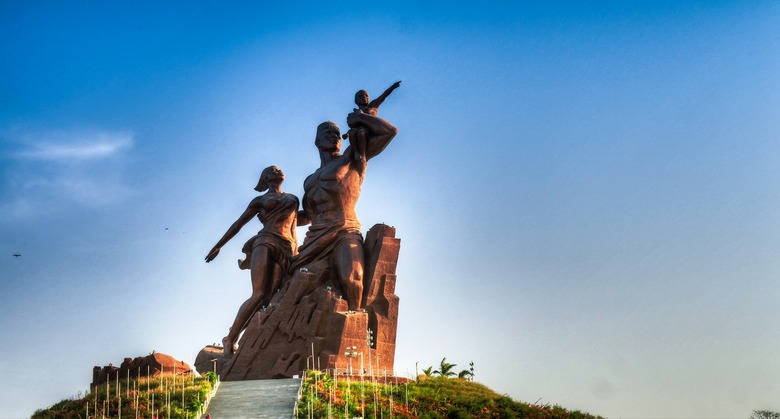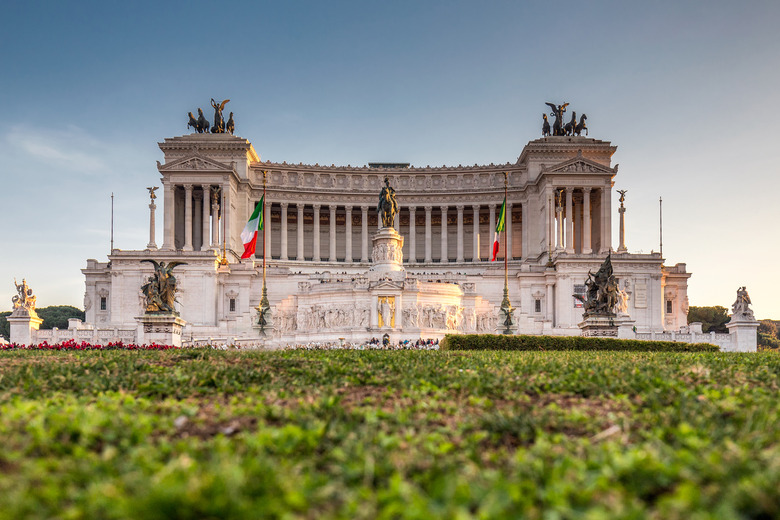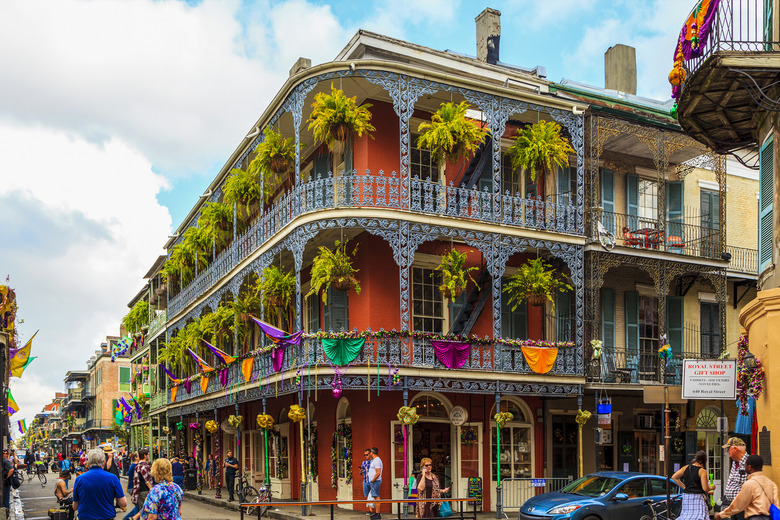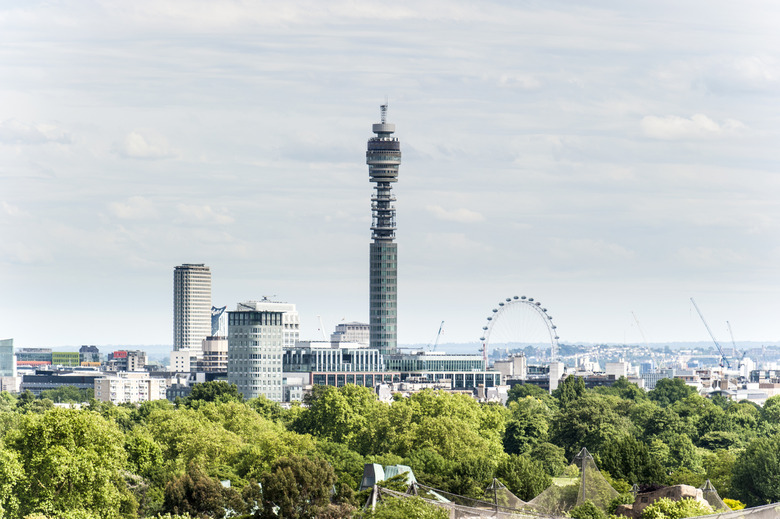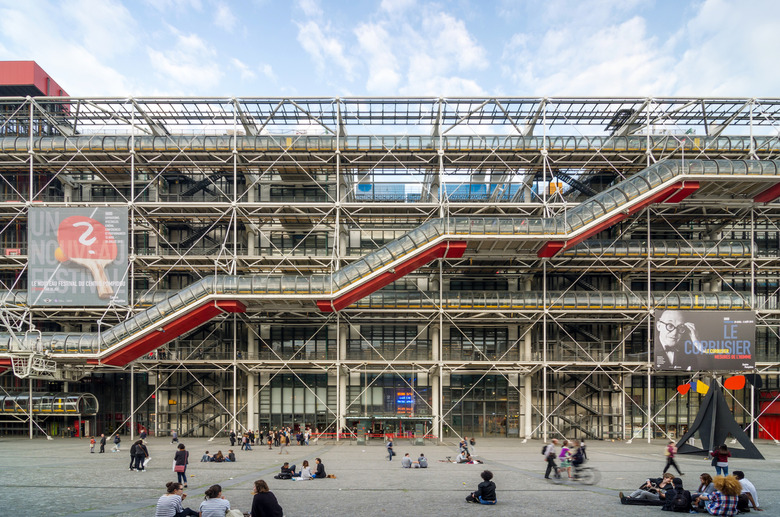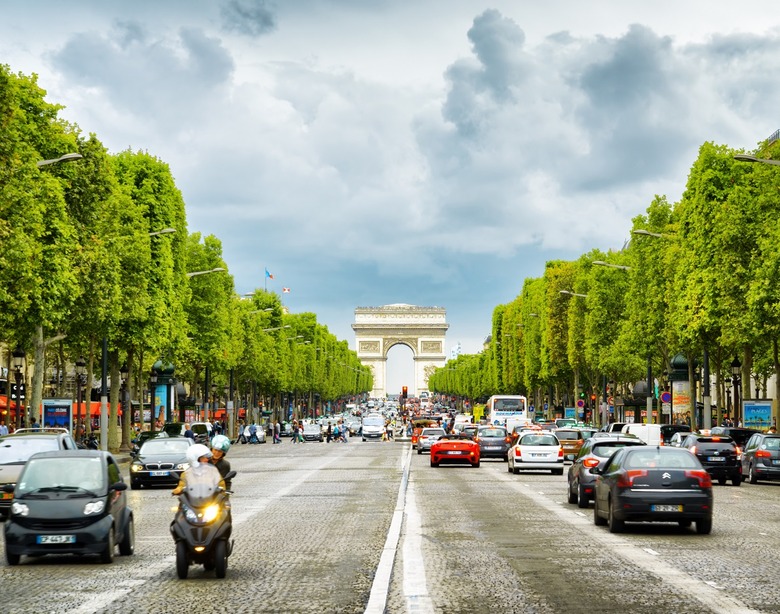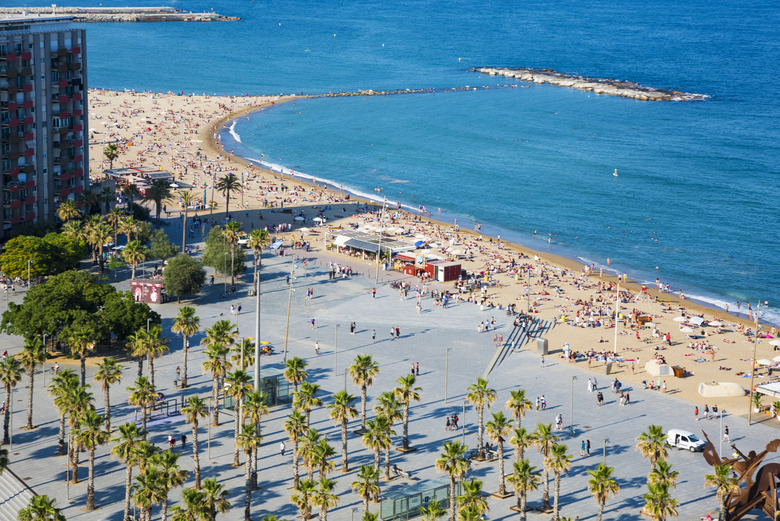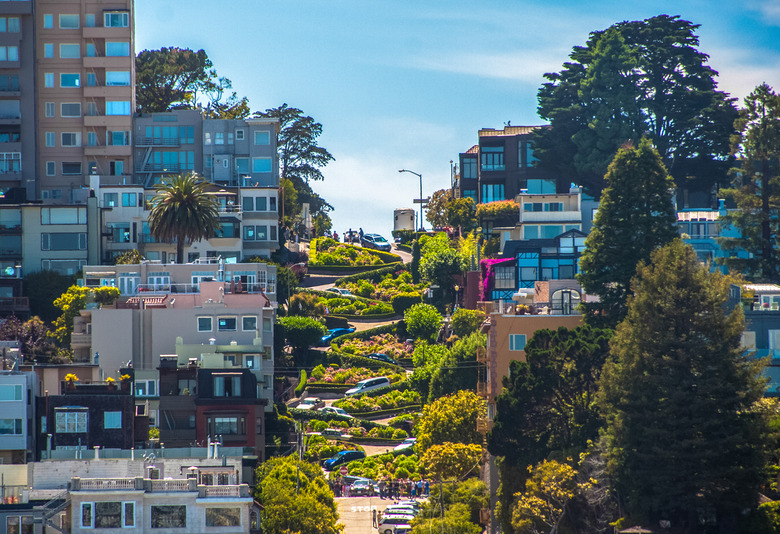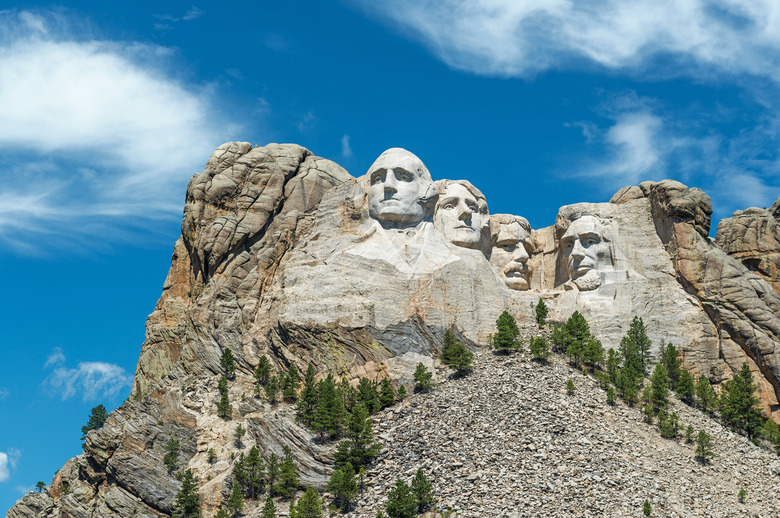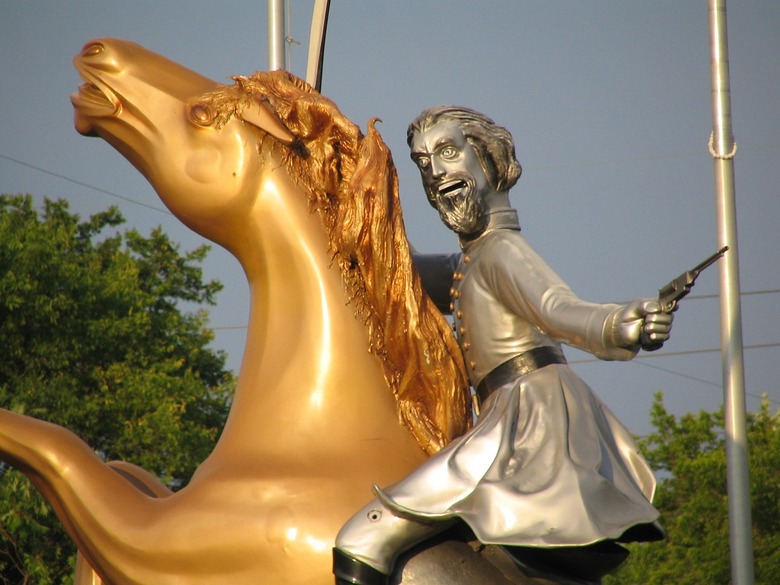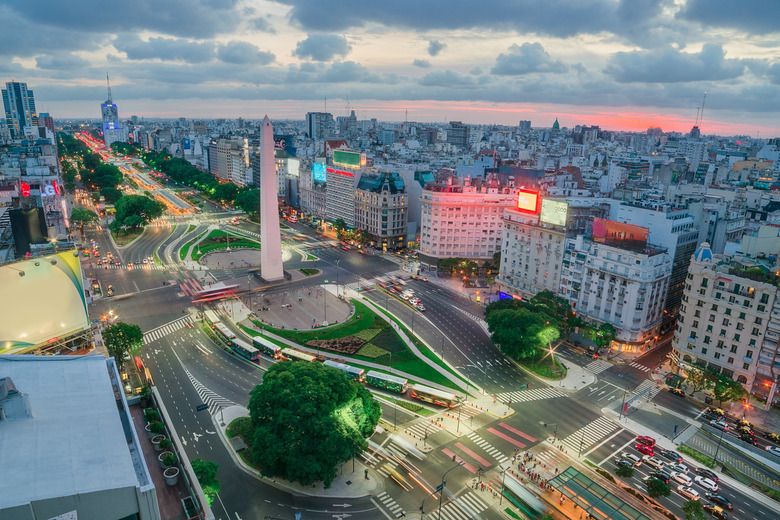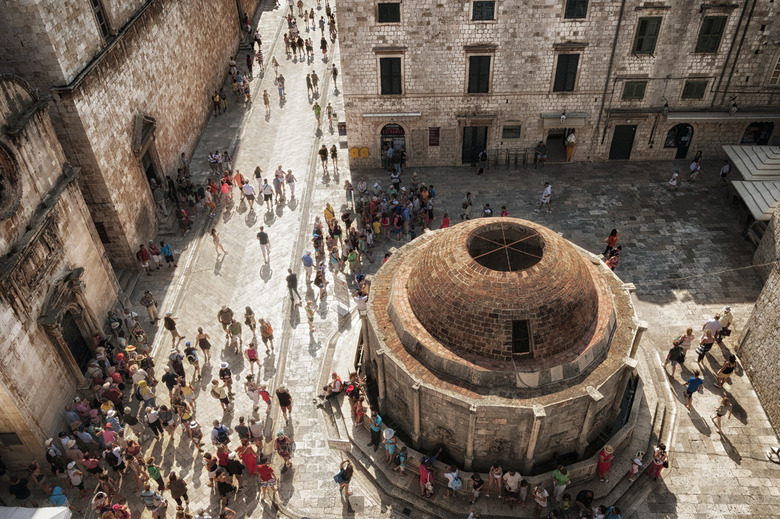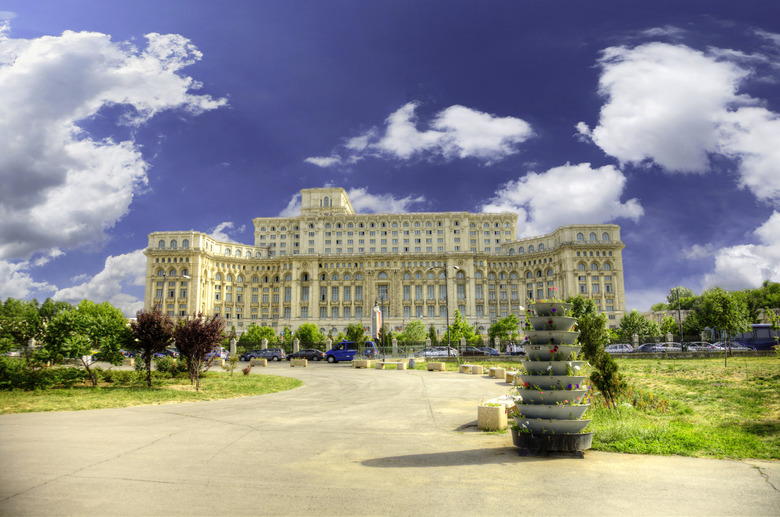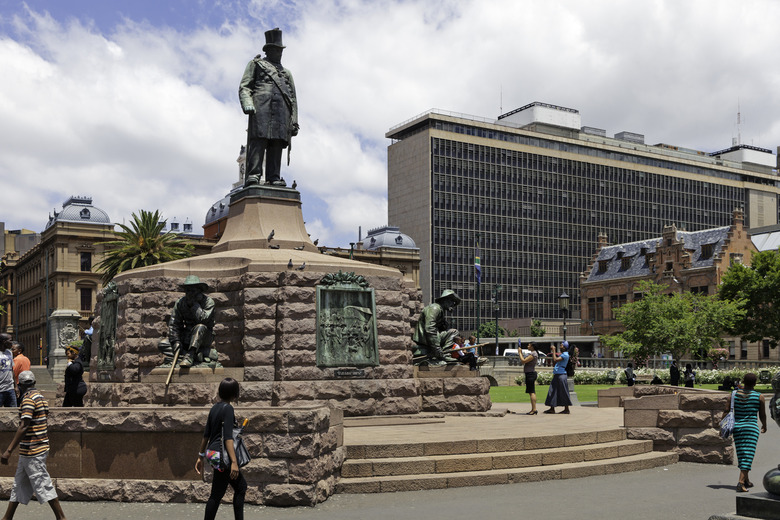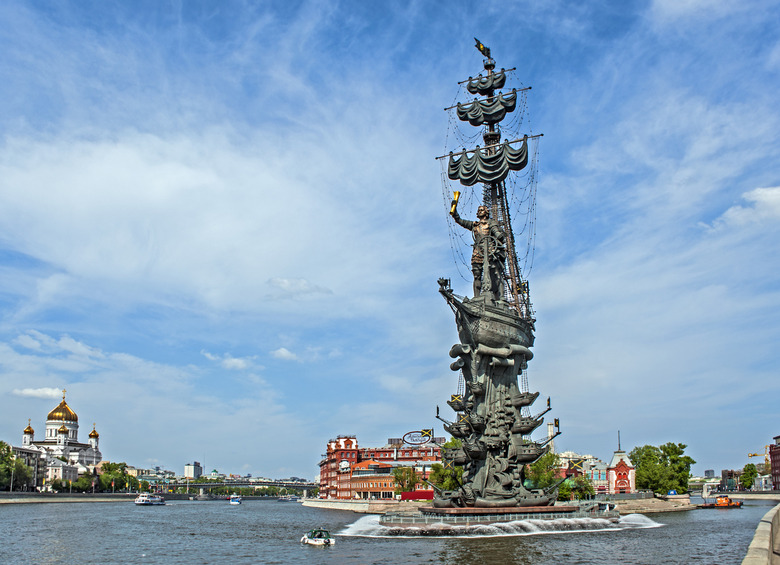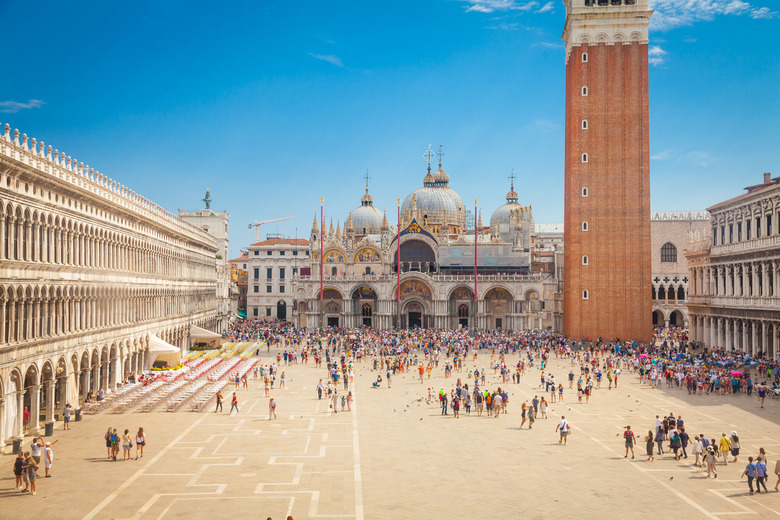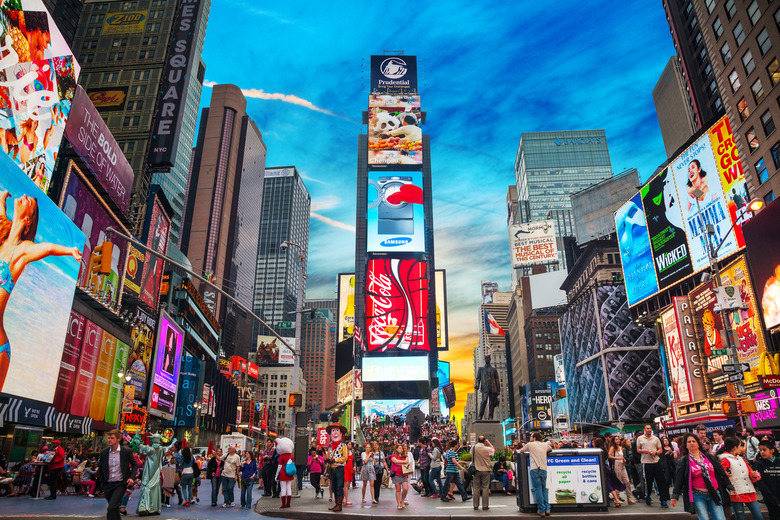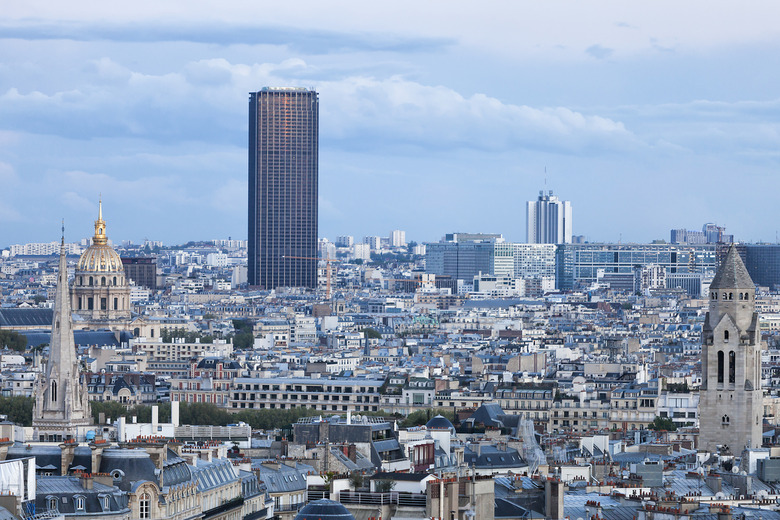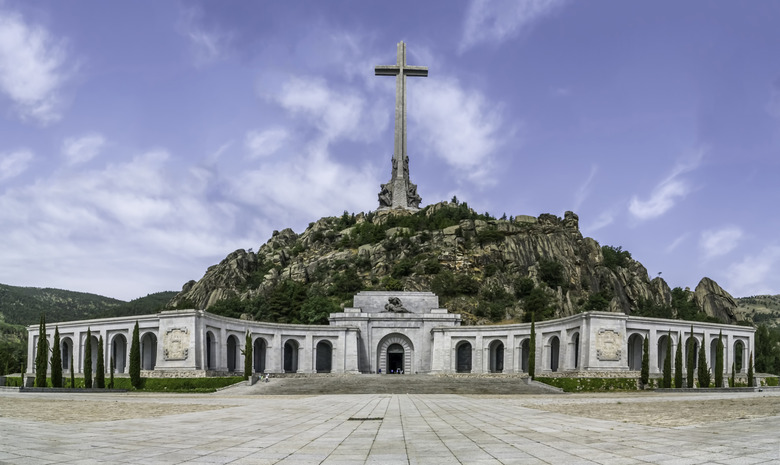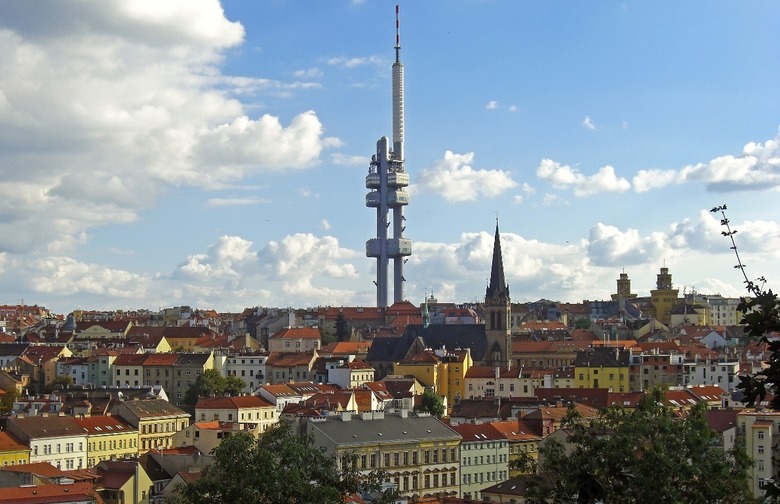Famous Landmarks The Locals Hate Gallery
People don't like change, generally, so it should come as no surprise that famous landmarks such as the Eiffel Tower and Washington Monument were initially met with much opposition during their initial planning and construction. Over time, however, public outrage cooled, and many famous structures that were once reviled are now among the most beloved and iconic landmarks of their respective cities. Today, hitting the top of the Eiffel Tower is a bucket list experience, and the Washington Monument is one of many attractions that makes Washington, D.C., such a patriotic destination.
Other landmarks, however, never have the fortune of finally receiving the love of their people. Disapproval can sometimes remain throughout the lifetime of a structure, occasionally even growing worse as time goes on and local attitudes toward historical and political events change. This sentiment often eludes visiting tourists, who excitedly snap photos of these famous spots — which can further upset locals. In fact, some landmarks go from being accepted or even loved to downright hated because of the swaths of tourists who come to see them, thus inconveniencing the locals who are either trying to live their lives or enjoy their city for themselves. As you don't want to be that tourist, perhaps you'd do best to skip the following attractions. Whether it's due to the history behind them, the sheer ugliness, or even just the fact that they bring in too much tourism, you'd be surprised how much these famous landmarks are hated by locals.
African Renaissance Monument (Dakar, Senegal)
Completed in 2010, the African Renaissance Monument in Senegal was the idea of then-president Abdoulaye Wade — a leader whose term was characterized by mismanagement, nepotism, corruption, and infringements on civil liberties and freedom of the press. Wade received much criticism for excessive spending, a charge exacerbated by his project for the 160-foot statue — the tallest in Africa — made of bronze and costing $27 million. To make matters worse, Wade has claimed intellectual property rights as well as 35 percent of profits raised from tourists who visit the statue. As Senegal is a predominantly Muslim country, many locals have also objected to the statue on the grounds of their own personal values. Not only do they feel that the statue is idolatrous, but they also object to the depiction of the woman, who is wearing clothes that are not African and reveal some of her chest and thighs as she is swept into the arms of a bare-chested male figure.
Altare della Patria (Rome, Italy)
Just down the street from the haunted Colosseum is the Altare della Patria (which means "Altar of the Fatherland" in Italian). Also known as the Monumento Nazionale a Vittorio Emanuele II ("National Monument to Victor Emmanuel II"), it was built to honor Victor Emmanuel, the nineteenth century ruler who was the first king of a united Italy since the sixth century and is known as the "Father of the Fatherland." Standing 230 feet high and 443 feet wide, the monument has been decried as an eyesore ever since it was completed way back in 1925, with locals calling it "The Wedding Cake" and "The Giant Typewriter." On top of all this, its initial construction destroyed a large area of the Capitone Hill, one of Rome's famous Seven Hills. Now over 100 years old, the monument and its bright white color still stand out in contrast to the ancient brownish buildings surrounding it.
Bourbon Street (New Orleans, La.)
Running right through the heart of the French Quarter, New Orleans's famous Bourbon Street is the most Instagrammable place in the state of Louisiana — which is exactly the problem. Locals often try to avoid Bourbon Street and its rowdy tourists, particularly when they're looking for some good food and drink in the city.
BT Tower (London, England)
The tallest building in the entire United Kingdom from the time of its completion in 1964 until the NatWest Tower took the title in 1980, the BT Tower is a communications tower located in the central London district of Fitzrovia. Standing at 627 feet, it's widely considered an eyesore and a detriment to the London skyline. There used to be an observation desk and revolving restaurant at the top of the tower, so that people could at least get a nice view from the structure, but both were closed following a bombing of the restaurant by an anarchist group. Despite its ugliness, however, the tower is still used as a major communications hub for the United Kingdom.
Centre Pompidou (Paris, France)
Designed in the tradition of postmodern, high-tech architecture, Centre Pompidou is a seven-story structure in Paris that has been marveled at by tourists and architecture students alike since its completion in 1977. The complex includes a public library, a center for music and acoustic research, and the Musée National d'Art Moderne, the largest modern art museum in Europe. Locals, however, aren't too fond of the building; even some supporters admit it clashes with the older and historic look of the surrounding area, which includes the oldest surviving house in Paris, built in 1407. Further infuriating Parisians, the Centre Pompidou was designed by three foreigners: Italians Renzo Piano and Gianfranco Franchini, as well as Englishman Richard Rogers. According to Rodgers, a local woman who was particularly upset by this landmark once encountered him during a rainstorm and hit him on the head with her umbrella.
Champs-Elysées (Paris, France)
Just over a mile long and 230 feet wide, the Avenue des Champs-Élysées is an iconic avenue in Paris, made particularly popular by the presence of the Arc de Triomphe — one of the top European landmarks you need to visit — at its western end. Known for upscale shopping, many top brands and luxury brands have storefronts on the Champs-Elysées, and the intense tourism has made the avenue a pain for locals who largely attempt to avoid it when getting around Paris. The city is currently planning on renovating the famous street by 2025, however, cutting its eight car lanes down and making more room for pedestrians, bikes, electric buses, and a tram. The plan also seeks to draw locals back with more cinemas, theaters, and cafés.
La Barceloneta Beach (Barcelona, Spain)
Locals don't hate La Barceloneta Beach itself but rather what it has become. A neighborhood of Barcelona, La Barceloneta includes a beach that's probably the most popular in the city, especially during the summer. It's so popular, in fact, that residents of the city have been known to hold demonstrations on the beach protesting tourism, which has increased rent prices as well as brought rowdy foreigners to its shores.
Lombard Street (San Francisco, Calif.)
San Francisco's Lombard Street has gained fame for a one-block section of the road which has eight hairpin turns, earning it the nickname "the crookedest street in the world." Over two million people visit the famous street every year, with up to 17,000 a day at the height of summer tourism season. Locals, particularly those living on the street itself, have become fed up with the intense tourism, however. Proposals have been made for a reservation system which includes a toll that visitors have to pay in order to drive on the street in hopes that traffic can be cut down somewhat.
Mount Rushmore National Memorial (Keystone, S.D.)
It's hard to deny that Mount Rushmore is a fitting tribute to the early leaders of America; however, this is true for two entirely different reasons. On one hand, patriotic supporters of the U.S. government will enjoy seeing the visages of presidents George Washington, Thomas Jefferson, Teddy Roosevelt, and Abraham Lincoln — arguably four of our best leaders — forever chiseled into the side of an enormous mountain. On the other hand, native tribes see it as quite appropriate that America would construct a tribute to the country by defacing and destroying land previously seized from the Lakota tribe after the Great Sioux War of 1876.
Nathan Bedford Forrest Statue (Nashville, Tenn.)
The statue of Nathan Bedford Forrest located in Nashville has an ugliness to it for two reasons. Designed by the co-founder of a white nationalist and white supremacist organization who said he built the statue because "somebody needs to say a good word for slavery," it depicts Confederate General Nathan Bedford Forrest, who was a slave owner and trader, as well as a leader of the Ku Klux Klan. While this makes it an obvious target for criticism, the statue, which shows Forrest firing backwards from horseback surrounded by Confederate battle flags, has also drawn ridicule; not only is the horse poorly designed, but Forrest's face has an almost comical look to it, with crazed, popping eyes and an open mouth. The structure has had to be protected by a padlocked gate, but that hasn't stopped it from being shot at and regularly vandalized, with protesters once trying to pull it down by tying it to a train.
Obelisco de Buenos Aires (Buenos Aires, Argentina)
Buenos Aires is a top destination this year, and its iconic Obelisco de Buenos Aires is a national monument of Argentina. However, the 235-foot obelisk has little historic significance other than the fact that it was completed in 1936 for the 400th anniversary of the first Spanish settlement on the Rio de la Plata, and it has been vandalized multiple times through the years.
Old Town of Dubrovnik (Dubrovnik, Croatia)
After the hit HBO show Game of Thrones used Dubrovnik as a filming location for the fictional capital of King's Landing, the city has been stormed with tourists. Many other filming crews have followed suit, such as that of Star Wars: The Last Jedi, Bond 25, and Robin Hood, starring Jamie Foxx and Taron Eagerton. The Old Town of Dubrovnik, in particular, has become iconic thanks to Game of Thrones, and as a result locals have complained enough that the city has put a cap of 4,000 people a day on the city's ancient center.
Palace of the Parliament (Bucharest, Romania)
Romania's Palace of the Parliament is 276 feet high, has 1,100 rooms, and takes up an area of 3.9 million square feet — and the locals hate every inch of it. To start, the project was undertaken by Communist leader Nicolae Ceauşescu in an effort to mimic the North Korean capital of Pyongyang. It also cost some 3 billion euros to build, claimed the lives of almost 3,000 construction workers (mostly forced laborers), and currently consumes more energy than a city of 250,000 people. On top of all this, the monstrosity is not particularly easy on the eyes. Efforts have been made recently to shake off the Communist past of the now-democratic Romania by adding appealing attractions to the location — such as the National Museum of Contemporary Art in 2004 — but too many still see the building as a much-too-obvious symbol of the country's perilous past.
Paul Kruger Statue (Pretoria, South Africa)
Sculpted in 1896, the bronze statue of Paul Kruger in Pretoria's Church Square is controversial due to the legacy of the man it depicts. President of the South African Republic from 1883 to 1900, Paul Kruger was a Boer political and military leader who many South Africans see as a champion of apartheid, therefore making the statue a racist monument. The statue has been vandalized, and left-wing political activists have vowed to destroy it. As a result, the structure has been fenced off and is not accessible to the public.
Peter the Great Statue (Moscow, Russia)
Peter may have been great, but many Russians think his statue is terrible. Unveiled in Moscow in 1997, the statue weighs 1,000 tons, stands 322 feet high, and is the eighth tallest in the world. However, it was also voted the 10th ugliest building in the world by Virtual Tourist in 2008 and one of the world's ugliest statues in 2010 by Foreign Policy magazine, and many Muscovites questioned why a statue of Peter the Great would be built in Moscow in the first place, considering that the tsar loathed Moscow and moved the Russian capital to St. Petersburg. To address this last issue, the statue was offered to the city of St. Petersburg, but it was refused. Adding another wrinkle to this tale, the structure's design (which features Peter riding atop an enormous ship) was allegedly originally intended to commemorate the 500th anniversary of Christopher Columbus' first voyage, but a customer for the project could not be found and it was repurposed with a Russian theme. For what it's worth, designer Zurab Tsereteli denies this claim.
St. Mark’s Square (Venice, Italy)
Tourism has been a controversial subject in the city of Venice. While the city's main public center, Piazza San Marco, or St. Mark's Square, isn't particularly hated on its own merit by Venetians, they do tend to avoid it and hate having to deal with tourists stopping to take selfies before heading back to their cruise ships. In fact, locals have complained so much about day tourists coming in and crowding up the city without bringing much to it that officials have introduced a measure to ban cruise ships from sailing through its city center by 2022.
Times Square (New York, N.Y.)
An iconic New York City attraction, one of the first stops for tourists visiting the Big Apple is often Times Square — much to the horror of locals. To New Yorkers, Times Square epitomizes everything that's wrong with their great city. It's way too noisy, way too bright, everything is overpriced, nothing is authentic, there are too many people, and everyone is constantly stopping, looking up, and snapping photos. Times Square might be the top of every tourist's to-do list, but residents avoid it at all costs.
Tour Montparnasse (Paris, France)
Tour Maine-Montparnasse, or Tour Montparnasse as it's usually called, is an office skyscraper with a distinctive, if unwelcome, presence on the Paris skyline. From the time of its completion in 1973 until 2011, it was the tallest skyscraper in all of France, a fact that was very apparent against the rest of the Parisian landscape. The relatively simple architecture of the structure (as well as its massiveness) made Tour Montparnasse stick out like a sore thumb and garnered a lot of criticism for looking so out of place and potentially ruining the skyline. Buildings over seven stories tall were even banned from the city center two years after the skyscraper was completed to make sure it wouldn't happen again. It should be noted, however, that many have said Tour Montparnasse does have the absolute best view of Paris — especially since it's the one place where you don't have to see the building itself.
Valley of the Fallen (Madrid, Spain)
The name might not be known to everyone, but the Valle de los Caídos ("Valley of the Fallen" in Spanish) is actually the fourth most-visited site managed by Spain's National Heritage Trust, and it is the final resting place of General Francisco Franco. This historical significance is in fact the reason that many Spaniards hate the Madrid monument, as Franco was an unpopular dictator whose regime's politically motivated human rights abuses caused the deaths of up to 400,000 people during his 35-year reign from 1938 to 1973. Containing an impressive Catholic basilica, a Benedictine abbey, and four sixteenth-century monoliths on 3,360 acres among the Mediterranean woodlands and granite boulders on the Sierra de Guadarrama hills, the complex was originally Franco's idea and was meant as a resting place and monument to the fallen of the Spanish Civil War, but today it serves as an uneasy reminder of Franco's reign, particularly after Francoist symbols were removed from nearly all public spaces and buildings under Spain's socialist government of 2004-2011.
Žižkov Television Tower (Prague, Czech Republic)
Declared the second ugliest building in the world by Virtual Tourist in 2009, the Žižkov Television Tower is another example of high-tech architecture falling flat. The transmitter tower began construction in 1985 and was completed in 1992, standing out among the Prague skyline from its spot in the Žižkov district, a great destination for food-lovers. The tower is meant to look like a triangle with the corners growing up in steel columns. Standing at about 709 feet, its unusual appearance has failed to endear locals to it, although the addition of a restaurant and a hotel have made some more amenable to it. In 2000, a Czech artist made 10 fiberglass sculptures of babies which were installed on the tower's pillars so that it seemed they were crawling up and down the massive structure. Meant to be a temporary installation, they were so popular that they became a permanent fixture on the tower. The "Miminka," or babies, as they're called, were removed for maintenance in the fall of 2017 and should be returned some time this year. While ugly and hated structures can be fascinating, a more pleasant trip would be spent chasing down the most scenic spots across America.
More from The Daily Meal:
Hidden Beaches the Locals Don't Want You to Visit
35 Iconic Street Foods Every World Traveler Must Try

